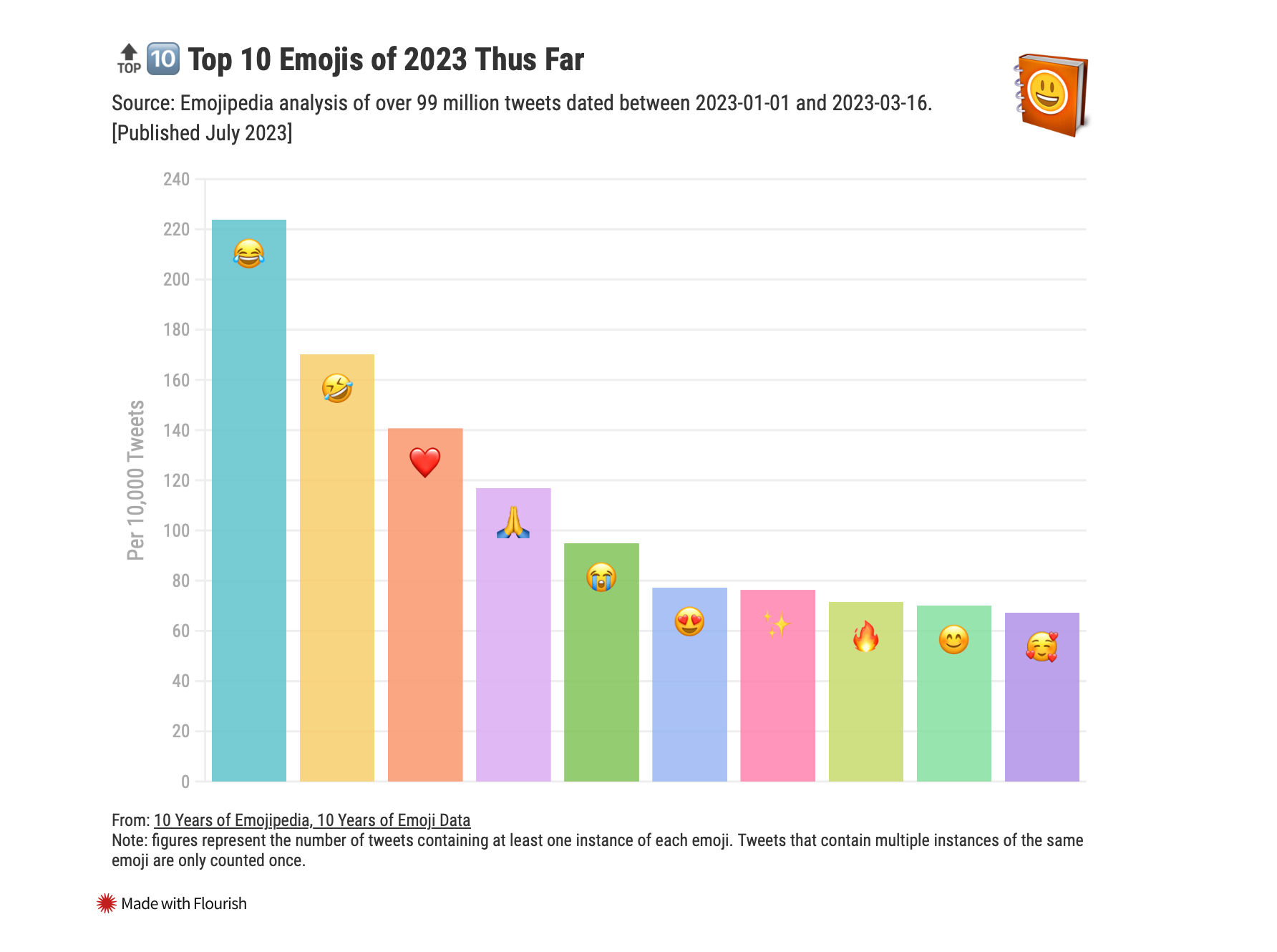Twitter's emoji use suggests it no longer leads internet culture
Is the resurgence of 😂😂😂 on Twitter a leading indicator?

Of all the statistics published by Emojipedia this World Emoji Day (📆), the one that stood out to me was this chart showing the changes in the top 10 emojis of the last decade.
Compiled from 6.5 billion (yes, billion with a B) tweets from 2013—2023, here's the race to the top:
Since sharing this on social media, the second-most common response was pointing out that 😭 Loudly Crying Face overtook 😂 Face with Tears of Joy in 2020 because of the pandemic.
The more nuanced view was published by Keith Broni in 2021:
What we're likely seeing here is a confluence of factors:
- 😂 Face with Tears of Joy has become over-exposed due to being the top emoji for the past decade
- 😭 Loudly Crying Face is more versatile, with emerging use as both laughter or sadness, depending on context. It's doing double-duty, and this has seen it become number one
- COVID-19 may have reduced the number of times we want to 😂😂😂 and increased the times we want to 😭😭😭.
Looking back, it seems that 😭 was likely also seeing high use on TikTok, which was starting to define internet culture more than Twitter around the same time.
However all of this was short lived, especially when it comes to Twitter emoji use, as 😂😂😂 is back in a big way.
As the quality of Twitter content has declined in 2022-2023 since the takeover by Elon Musk, it's possible that the resurgence of 😂😂😂 is a canary in the coalmine for a descent into sensationalist resposts, crypto bros and/or basic takes on Twitter.
More analysis would need to be done to make this more than just a hypothesis, so consisder this as me putting it out there.
The final 💅 in the ⚰️
The most common response when I posted the top emoji graph online: where's the 💀?
This can partly be explained by the platform differences, but that's not all.
In 2017 Apple published a list of the top 10 emojis used on Apple platforms as a way to show off their new hotness differential privacy; theoretically allowing them to know details like the most used emojis on macOS or iOS, without actually reading what anyone is typing.
The top emojis in Apple's 2017 report mostly mirrored those seen in Twitter trends from Emojipedia, except that 💀 Skull made an appearance at #7.
Despite skull = laugh being positively mainstream on TikTok since 2021, and seeing more use on Instagram and other platforms, 💀 hadn't cracked the top 10 on Twitter in 2017, and still hasn't as of 2023.

Another sign, IMO, that Twitter no longer represents internet culture in the way it did in 2013 when I first launched Emojipedia *
@mobiletechjournal Any other surprises?
♬ Coconut Mall (From "Mario Kart Wii") - Arcade Player
* disclaimer that I founded Emojipedia, served as Chief Emoji Officer until 2022, and previously represented Emojipedia at Unicode Technical Committee meetings.